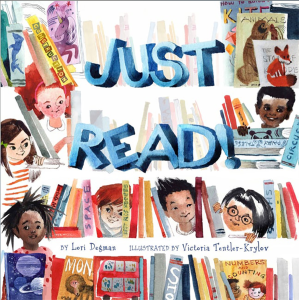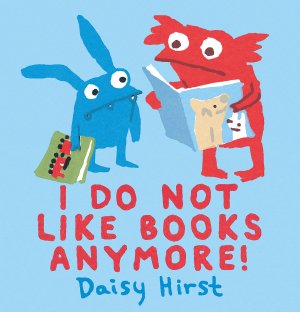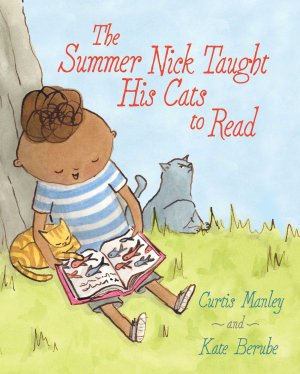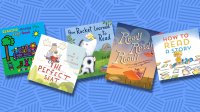13 Picture Books for Young Students About Learning How to Read
Reading about reading can help put young learners on the path to becoming lifelong readers, and these books will inspire them.
Your content has been saved!
Go to My Saved Content.It never failed. Every year that I worked in a school library, a first- or second-grade student would browse the nonfiction section, select the oversized 1936 copy of The Complete Works of William Shakespeare, and head to the checkout desk. Classmates would immediately flock to that child—some dubious, some envious, some ecstatic.
Every time that book was heaved up to the front desk, it wound up being immediately reshelved, and the child would be directed to a more appropriate selection—perhaps an Elephant and Piggie book. This anecdote reveals volumes about what many young children believe about the reading process: The person who reads the biggest book with the smallest print wins.
This book-as-trophy scenario aligns perfectly with the development of 5- and 6-year-olds: They want to be seen as capable and independent beings. They project an aura of having everything under control, and they certainly don’t need help. Of course, it’s precisely then that we as educators challenge them to do one of the most difficult assignments of their academic career (and they will definitely need help): We ask them to become readers.
With such a complex academic task at hand, it’s critical that educators have an ongoing dialogue with young children about the reading process. We need to repeatedly assure them that although learning how to read is challenging, they certainly won’t be alone on this journey.
One way to inspire discussion about the reading process is to read picture books about reading and learning how to read. These books should be read not only in the classroom but also at home by parents and caregivers. Reading about reading is one of the most helpful ways of immediately addressing the social and emotional needs of beginning readers.
The picture books that follow explore the theme of reading from a variety of points of view, but each title assures children that reading achievements can be small, medium, or large—essentially affirming that all reading is worth celebrating.
13 Books That Inspire and Encourage Young Readers
The Perfect Seat, by Minh Lê, illustrated by Gus Gordon. A moose parent and child hunt all around the city in pursuit of the perfect seat to read a new book. (Preschool–first grade)

Just Read! by Lori Degman, illustrated by Victoria Tentler-Krylov. Numerous children share the places and things that they like to read about. (Preschool–first grade)
You Are a Reader!/You Are a Writer!, by April Jones Prince, illustrated by Christine Davenier. Just as reading and writing go hand in hand, such is the case for this two-stories-in-one book. (Preschool–first grade)
How Rocket Learned to Read, by Tad Hills. A little yellow bird patiently and eagerly teaches reluctant Rocket the dog how to read. (Kindergarten–first grade)
How to Read to a Grandma or Grandpa, by Jean Reagan, illustrated by Lee Wildish. There are many things to consider when you want to read to your grandparents, and this helpful how-to picture book reassures the young reader that once everything is in place, there’s no more attentive audience. (Kindergarten–first grade)

I Do Not Like Books Anymore! by Daisy Hirst. Natalie loves stories, until she makes the horrific discovery that books for beginning readers can be… well… boring. Fortunately, Natalie decides to make her own beginner reading books. (Kindergarten–first grade)
How to Read a Story, by Kate Messner, illustrated by Mark Siegel. This procedural picture book includes 10 steps to assist a new reader in the enjoyment of reading. (Kindergarten–second grade)
Hooray for Reading Day! by Margery Cuyler, illustrated by Arthur Howard. Jessica has a colossal worry on her mind: First grade is going to have a readers’ theater. Will she be able to read in front of an audience? (Kindergarten–second grade)
How to Teach a Slug to Read, by Susan Pearson, illustrated by David Slonim. Who knew that 10 strategies to help a slug learn how to read would be helpful for all new readers? (Kindergarten–second grade)
Reading Makes You Feel Good, by Todd Parr. Parr reminds us how many gifts flow from reading. You can read anywhere! You can learn things! It’s a vehicle for your imagination. (Kindergarten–second grade)

The Summer Nick Taught His Cats to Read, by Curtis Manley, illustrated by Kate Berube. Nick is determined to teach his two cats, Vern and Stevenson, how to read. Vern quickly becomes curious, but Stevenson steadfastly refuses. Nick’s persistence and patience is ultimately rewarded when even Stevenson finally becomes a willing student. (Kindergarten–second grade)
Read! Read! Read! by Amy Ludwig VanDerwater, illustrated by Ryan O’Rourke. This poetry anthology celebrates reading with 23 poems. The companion book is Write! Write! Write! (Kindergarten–third grade)
Walk in the Words, by Hudson Talbott. A child who loves to draw is absolutely befuddled by words, much less sentences. This book is the author’s childhood reflection on his initial struggle to learn how to read. (First–third grades)
